#medieval france
Text

Lancelot Du Lac in a French manuscript. [c.1310-1315]
#Lancelot#Lancelot du Lac#medieval#medieval France#Middle Ages#manuscript#medieval manuscript#art#medieval art#Arthurian Tales
362 notes
·
View notes
Photo

Demons Attacking a Castle, Alfonsus de Spina, France, 15th century
428 notes
·
View notes
Text
Historical May Prompt 4 Process Video
I am the artist! Do not post without permission & credit! Thank you! Come visit me over on: instagram.com/ellenartistic or tiktok: @ellenartistic
#historical mermay#medieval France#process on procreate#procreate video#i'm on tiktok i guess#character design#costume design#lnart#ellenart#digital illustration#historically inspired
93 notes
·
View notes
Text

Happy to be able to share new artwork!
King's Royal Entry, a painting I made for the upcoming boardgame Epochs: Course of Cultures.
This is the King of France with his retinue entering the city. The painting is inspired by an artwork of medieval painter Jean Fouquet
Hope you like it!
Best.
JCH
#dungeons and dragons#board games#concept art#fantasy art#tabletop games#digital painting#magic the gathering#character design#ancient history#armor#medieval#medieval history#knight#medieval france#king of france#medieval art#the witcher#game of thrones#a song of ice and fire
35 notes
·
View notes
Text
Discover the hidden history of Beaumont Abbey, an archaeological marvel revealing 800 years of history in Indre-et-Loire, France. Find out what was left behind by the Benedictine nuns who lived there until they were finally expelled in 1780.
9 notes
·
View notes
Text

Happy Birthday to my favourite Escaflowne character Dilandau Albatou!
I created this fan art in their honour. The inspiration for this fan art came from the scene where Dilandau is looking imposing in a throne room, but I wanted to convey that this image of power and confidence may not be as unshakeable as it seems... What dark secrets reside behind the curtains of Dilandau's life?
This fan art features my original artwork of Dilandau, made with pen and ink / colour pencils. The background is a generic Baroque era painting inspired throne with draperies made in DALL-E AI and recoloured to make Dilandau more vibrant. I added a few final edits in Canva. Although I am generally not for AI art, I think we can learn to skilfully incorporate it into original human-created art.
#escaflowne#vision of escaflowne#tenkuu no escaflowne#katia hougaard#escaflowne fanart#escaflowne characters#escaflowne fan art#tenku no escaflowne#the vision of escaflowne#visions of escaflowne#anime#90s anime#sword and sorcery#medieval#dark fantasy#armor#knight#knight aesthetic#medieval france#joan of arc#black and white background#ai generated#made with canva#sword#red and black armor#silver hair#red eyes#bishonen#twink#throne room
11 notes
·
View notes
Text
14 notes
·
View notes
Photo

Mirror case, ivory, the Storming on the Castle of Love, France (Paris), second quarter of the fourteenth century
“The scene is an allegorical representation of an attack on the Castle of Love. Knights attack the Castle of Love 'defended' by women, who ardently receive the knights when they climb over the battlements, above a twin-towered gate house with a portcullis.
The subject of the Siege of the Castle of Love appears frequently on secular ivories in the fourteenth century; the Museum owns two other mirror cases and a casket bearing similar representations. An allegorical siege of the Castle of Love seems to have been frequently enacted during the Middle Ages; the thirteenth century chronicler, Rolandino of Padua, for instance, records a festival in the town of Treviso in 1214 where a castle was built, and defended by the women and girls of the town while being attacked with fruits, perfumes and flowers thrown by the men.
This type of festivity remained popular for several centuries. We know that the marriage of Henry VII's son, Prince Arthur, in 1501, was celebrated with a Masque of the Mount of Love besieged by knights, and a similar pageant took place regularly in Fribourg up until the eighteenth century.”
— Victoria and Albert Museum Collections
#medieval history#medieval#art#objet#castle of love#medieval france#victoria and albert museum#museum collection#chivalry#chivalric romance#courtly love#courtliness#my post
23 notes
·
View notes
Text
Bahhh last post for the night but in light of all the 15th/16th century dog ocs I made my own! A Great Pyrenees French royal (they are nb with an amab body) and they’re ironically named after the louis kings! And they only speak French but hey (I am French so this is definitely not self indulgent ) but the Great Pyrenees was officially deemed a royal French dog by king louis the 14th! So naturally I had to go with this dog breed (n mono is making them a partner :) ) but this is only the concept sketch

#oc#dog oc#great pyrenees#15th century#16th century#history#medieval france#louis#sketch#wip#work in progress#emeralds art
4 notes
·
View notes
Photo
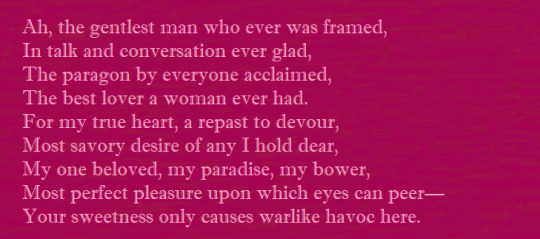
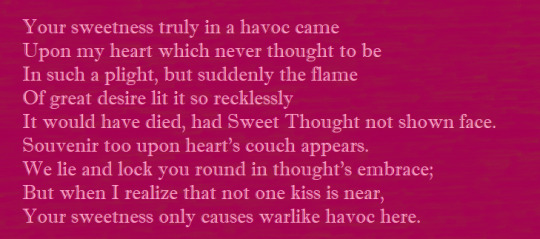
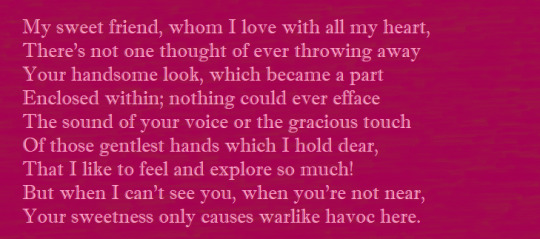

Ballade XXXV "The Gentlest Man" by Christine de Pizan (1364–1429) translated by James J. Wilhelm
#influences#christine de pizan#poetry#medieval poetry#french poetry#poetry by women#women in history#feminist history#proto feminist literature#ballade#medieval france
19 notes
·
View notes
Text
Anne de Bretagne, twice Queen of France. [1477-1525].
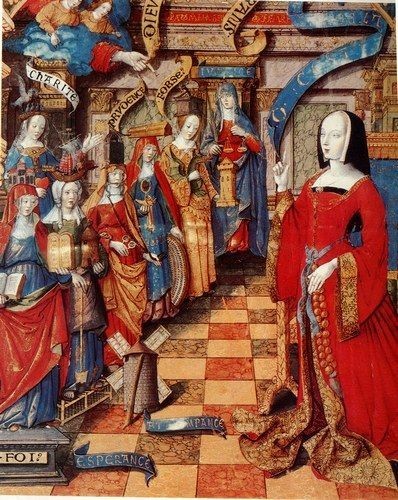



13 notes
·
View notes
Text
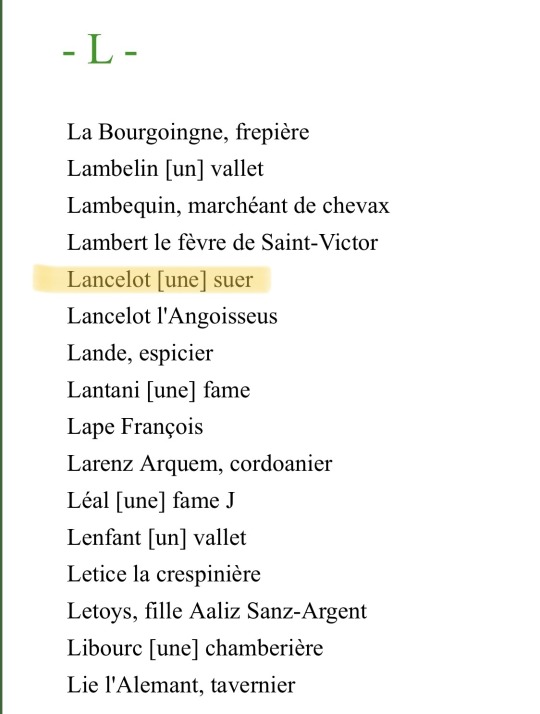
looking at names from a 13th century French census and I’m absolutely obsessed with this girl named Lancelot
#what else would I be doing on a friday night#lancelot#medieval france#also learning about some fun careers
27 notes
·
View notes
Text
I’m thinking about a feeling I would call historical grief.
I spend a lot of time researching medieval France, especially Arras, reading about the people and their interpersonal dramas. The corrupt bailli, the murdered provost, the altercations in taverns. This summer I got to go there and read their records on thirteenth century scrolls, written in their own handwriting (or that of a contemporaneous clerk). Thirteenth-century Arras and its surrounding environs had a population that peaked around 80,000 people over the course of the century. By the end of the 1200s and the year 1400, half of the population of Artois was dead due to famine or plague.
The Middle Ages were not a nice time. The systems of power were cruel and unfair and people could be brutal. But that’s true today too. And it’s a strange grief to confront the fact that these people, who I’ve gotten to know just a little bit over 700 years later, didn’t know what was coming for them. The squabbles over the price of wheat in 1285 look tragically petty when people were starving by 1316. The systems of charity that managed to keep people comfortable in 1254 could do nothing for victims of the plague of 1349.
This is not to say worse tragedies haven’t happened. Worse tragedies are happening right now. But it’s the time scale that’s hitting me right now for my Arrageois research - the historical grief for people who would have died anyway, plague or famine or not.
#a post by me#researching history is all fascinating and fine and normal until one sentence in a book hits you like a brick#old things#medieval France
3 notes
·
View notes
Text
A form of vilification popular from the last decades of the twentieth century has been to cast Isabeau as a foil, as the baleful opposite of a good figure. She has been the traitor and adulterer opposed to the patriotic maid Joan of Arc, promiscuous spendthrift against the austere proto-feminist Christine de Pizan, and evil mother against the good mother Yolande of Aragon (or Anjou), Charles VII’s mother-in-law, also tasked with managing her dynasty. Philippe Erlanger names the first two chapters of his study of Charles VII “La mauvaise mère,” a reference to Isabeau, and “La bonne mère,” a reference to Yolande. In Erlanger’s estimation, Isabeau was neither the monster nor the unnatural mother that she has sometimes been thought to be: she was just busy enjoying the caresses of her lover Louis of Orléans while humble nurses watched over the little Charles. Yolande, on the other hand, was the good fairy who snatched the little prince from the evil genies and brought him to a peaceful oasis. Throughout the course of the almost entirely footnote-free work Erlanger offers not the slightest justification for the characterizations either of the “Bavarian” or Yolande in whom “burning Spain” and “harsh Lorraine” met under the peaceful protection of the Valois.
Tracy Adams, "Misogynistic Throwaways: The Case of Isabeau of Bavaria", Queens, Regents, Mistresses: Reflections on Extracting Elite Women’s Stories from Medieval and Early Modern French Narrative Sources (2023)
#they also do this with isabeau and isabelle and catherine de valois#which is more of a thing in historical fiction and english history which is probably why adams doesn't mention it#also lol at “almost entirely footnote-free work”#isabeau of bavaria#joan of arc#yolande of aragon#christine de pizan#charles vii of france#reputation and representation#historian: tracy adams#medieval france
4 notes
·
View notes
Text

All hail Joan of Arc, a holy figure chosen by God to be a LGBTQ+ figure!
🏳️🌈⚜️🇫🇷
#history#joan of arc#france#cross dressing#saint#lgbtq#lgbt history#medieval#historical figures#christian saints#womens history#medieval france#divine feminine#medieval england#lgbt icons#french history#middle ages#girl power#lgbtq history#lgbt#grl pwr#war hero#historical women#catholic church#feminist icon#medieval europe#nickys facts
23 notes
·
View notes
Text
Found my new favourite medieval job
"espardeur de fiens"
which means... huh...
Well you see manure ? Someone's got to put that on the fields.
In the early 13th century, the town of Saint-Omer (north of France) apparently had an official municipal "espardeur de fiens" charged of increasing productivity in the nearby farms.
It apparently worked wonders: farms in the area produced 14 to 21 grains per each grain planted (compared to 1 for 7 or 8 in already fertile regions like the region around Paris).
#history#medieval history#middle ages#france#medieval france#agriculture#late middle ages#i never knew manure could be so powerful honestly
10 notes
·
View notes